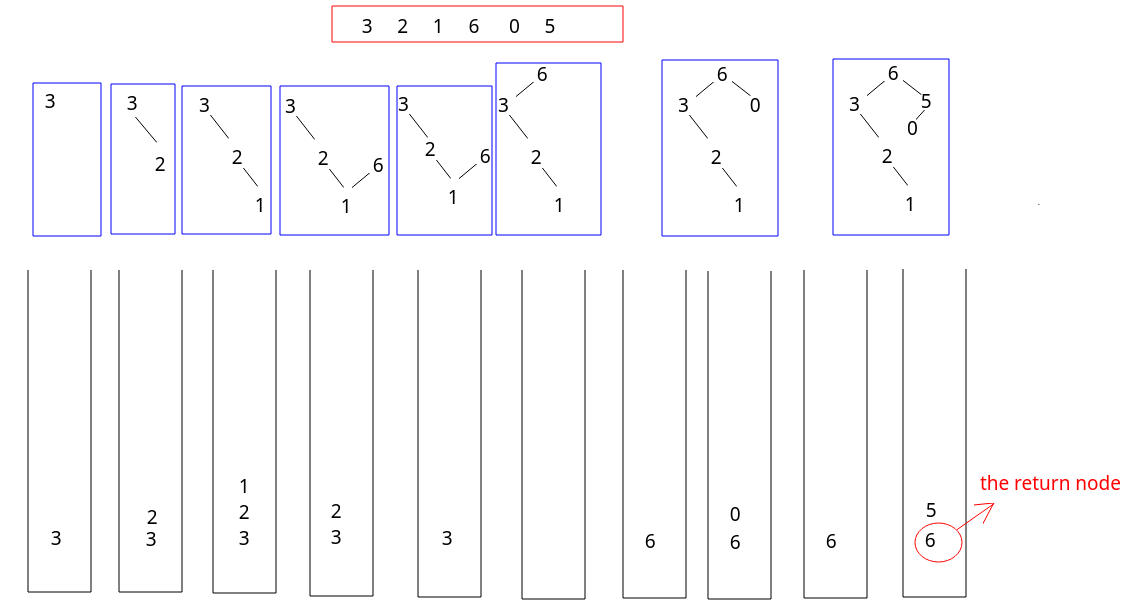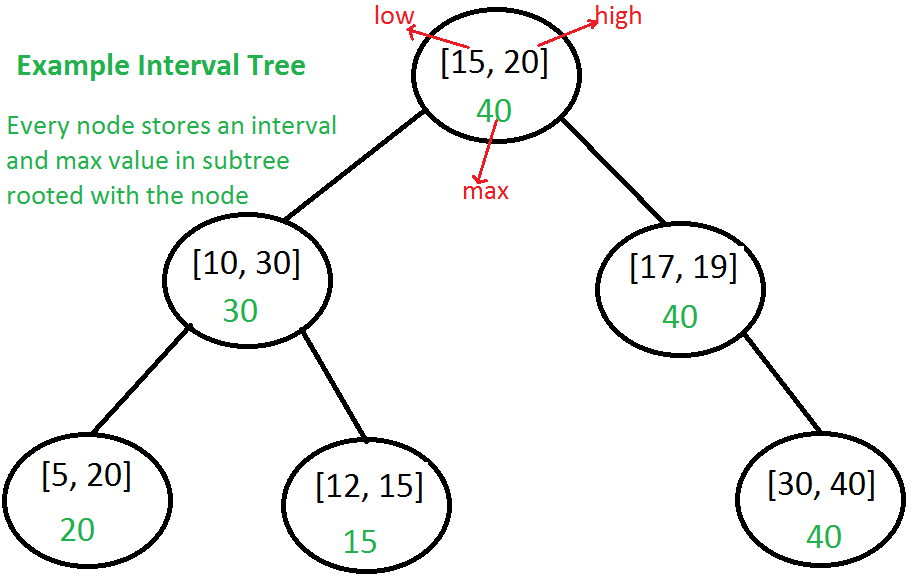Union Find - How to Succeed in Algorithms Interview
Applications of Union Find(Disjoint Set)
- Connected components/groups, connections
- Find cycle
- useful when give edges of graph
Time complexity
- without anything: O(N)
- with Union by Rank: O(logN)
- with Path Compression: O(α(N)) which is inverse Ackermann function.
Info we can get
- find root, union
- count of components, size of each component
- whether two nodes are connected or in same group
Implementation Detail
- UnionFind(int size)
- int[] parent; int[] rank;
- Map<String, String> parents or parent[];
- find, union, isConnected, findCount
- highestRank, maxUnion
- find grouped ids
Summary
Dummy node/parent
Given a 2D board containing 'X' and 'O', capture all regions surrounded by 'X'. A region is captured by flipping all 'O's into 'X's in that surrounded region.
For example,
X X X X
X O O X
X X O X
X O X X
After running your function, the board should be:
X X X X
X X X X
X X X X
X O X X
- we connect all the ‘O’ nodes on the boundary to a dummy node, and then connect each ‘O’ node to its neighbour ‘O’ nodes
int row, col;
public void solve(char[][] board) {
if (board == null || board.length == 0) return;
row = board.length;
col = board[0].length;
UnionFind uf = new UnionFind(row*col+1);
int dummy = row*col;
for (int i = 0; i < row; i++) {
for (int j = 0; j < col; j++) {
if (board[i][j] == 'O') {
if (i == 0 || i == row-1 || j == 0 || j == col-1) uf.union(node(i, j), dummy);
else {
if (i > 0 && board[i-1][j] == 'O') uf.union(node(i, j), node(i-1, j));
if (i > 0 && board[i+1][j] == 'O') uf.union(node(i, j), node(i+1, j));
if (j > 0 && board[i][j-1] == 'O') uf.union(node(i, j), node(i, j-1));
if (j > 0 && board[i][j+1] == 'O') uf.union(node(i, j), node(i, j+1));
}
}
}
}
for (int i = 0; i < row; i++) {
for (int j = 0; j < col; j++) {
if (uf.isConnected(node(i, j), dummy)) board[i][j] = 'O';
else board[i][j] = 'X';
}
}
}
public int node(int i, int j) {
return i*col+j;
}
What to Group/Union
Map<Integer, Integer> map = new HashMap<>(); // parent
Map<Integer, Integer> c = new HashMap<>(); // count
int res=1;
public int longestConsecutive(int[] a) {
if(a.length==0) return 0;
for(int i=0;i<a.length;i++){
int cur = a[i];
if(map.containsKey(cur)) continue;
map.put(cur,cur);
c.put(cur, 1);
if(map.containsKey(cur-1)) union(cur-1, cur);
if(map.containsKey(cur+1)) union(cur+1, cur);
}
return res;
}
int find(int x){
if(map.get(x)==x) return x;
int par = find(map.get(x));
map.put(x, par); // path compression
return par;
}
void union(int x, int y){
int px = find(x);
int py = find(y);
int newCount = c.get(py)+c.get(px);
if(c.get(px)<c.get(py)){
map.put(px, py);
c.put(py, newCount);
}else{
map.put(py, px);
c.put(px, newCount);
}
res=Math.max(res, newCount);
}
public int largestComponentSize(int[] A) {
int N = A.length;
Map<Integer, Integer> map = new HashMap<>();// key is the factor, val is the node index
UF uf = new UF(N);
for (int i = 0; i < N; i++){
int a = A[i];
for (int j = 2; j * j <= a; j++){
if (a % j == 0){
if (!map.containsKey(j)){//this means that no index has claimed the factor yet
map.put(j, i);
}else{//this means that one index already claimed, so union that one with current
uf.union(i, map.get(j));
}
if (!map.containsKey(a/j)){
map.put(a/j, i);
}else{
uf.union(i, map.get(a/j));
}
}
}
if (!map.containsKey(a)){//a could be factor too. Don't miss this
map.put(a, i);
}else{
uf.union(i, map.get(a));
}
}
return uf.max;
}
Union-Find - Weight
- Parent node contains extra info
- HARD LeetCode 399 - Evaluate Division
class Node {
public String parent;
public double ratio;
}
class UnionFindSet {
private Map<String, Node> parents = new HashMap<>();
public Node find(String s) {
if (!parents.containsKey(s)) return null;
Node n = parents.get(s);
if (!n.parent.equals(s)) {
Node p = find(n.parent);
n.parent = p.parent;
n.ratio *= p.ratio;
}
return n;
}
public void union(String s, String p, double ratio) {
boolean hasS = parents.containsKey(s);
boolean hasP = parents.containsKey(p);
if (!hasS && !hasP) {
parents.put(s, new Node(p, ratio));
parents.put(p, new Node(p, 1.0));
} else if (!hasP) {
parents.put(p, new Node(s, 1.0 / ratio));
} else if (!hasS) {
parents.put(s, new Node(p, ratio));
} else {
Node rS = find(s);
Node rP = find(p);
rS.parent = rP.parent;
rS.ratio = ratio / rS.ratio * rP.ratio;
}
}
}
public double[] calcEquation(String[][] equations, double[] values, String[][] queries) {
UnionFindSet u = new UnionFindSet();
for (int i = 0; i < equations.length; ++i)
u.union(equations[i][0], equations[i][1], values[i]);
double[] ans = new double[queries.length];
for (int i = 0; i < queries.length; ++i) {
Node rx = u.find(queries[i][0]);
Node ry = u.find(queries[i][1]);
if (rx == null || ry == null || !rx.parent.equals(ry.parent))
ans[i] = -1.0;
else
ans[i] = rx.ratio / ry.ratio;
}
return ans;
}
Info we can get
// https://leetcode.com/articles/minimize-malware-spread/
for (int node: initial)
count[dsu.find(node)]++;
- without anything: O(N)
- with Union by Rank: O(logN)
- with union by rank + Path Compression: O(α(N)) which is inverse Ackermann function.
- This function has a value {(n)<5} for any value of n that can be written in this physical universe.
Classic Problems
int x_set = find(parent, edge.source);
int y_set = find(parent, edge.destination);
//check if source vertex and destination vertex belongs to the same set
// if in same set then cycle has been detected else combine them into one set
if(x_set==y_set)
return true;
else
union(parent, x_set, y_set);
int res = Integer.MAX_VALUE;
public int minTransfers(int[][] transactions) {
HashMap<Integer, Integer> map = new HashMap<Integer, Integer>();
for (int[] transaction : transactions) {
map.put(transaction[0], map.getOrDefault(transaction[0], 0)-transaction[2]);
map.put(transaction[1], map.getOrDefault(transaction[1], 0)+transaction[2]);
}
ArrayList<Integer> depts = new ArrayList<Integer>();
for (int dept : map.values()) {
if (dept != 0) depts.add(dept);
}
helper(depts, 0, 0);
return res;
}
public void helper(ArrayList<Integer> depts, int start, int count) {
while (start<depts.size() && depts.get(start)==0) start++;
if (start == depts.size()) {
res = Math.min(res, count);
return;
}
for (int i=start+1; i<depts.size(); i++) {
if (depts.get(start)<0&&depts.get(i)>0 || depts.get(start)>0&&depts.get(i)<0) {
depts.set(i, depts.get(i)+depts.get(start));
helper(depts, start+1, count+1);
depts.set(i, depts.get(i)-depts.get(start));
}
}
}
Examples
Design a data structure to support following functions:
1. setManager(A, B) sets A as a direct manager of B
2. setPeer(A, B) sets A as a colleague of B. After that, A and B will have the same direct Manager.
3. query(A, B) returns if A is in the management chain of B.
Every person only has 1 direct manager.
Union Find Implementation
- rank is only used in union
Using Array
class UnionFind {
int[] parent;
int[] rank;
int count;
public UnionFind(int n) {
parent = new int[n];
rank = new int[n];
count = n;
for (int i = 0; i < n; ++i) {
parent[i] = i;
rank[i] = 0;
}
}
public int find(int x) { // path compression
// only the rank of the root matters, used in union op.
if (parent[x] != x)
parent[x] = find(parent[x]);
return parent[x];
}
public void union(int x, int y) { // union with rank
int rootx = find(x);
int rooty = find(y);
if (rootx != rooty) {
if (rank[rootx] > rank[rooty]) {
parent[rooty] = rootx;
} else {
parent[rootx] = rooty;
if (rank[rootx] == rank[rooty])
rank[rooty] += 1;
}
count--;
}
}
public int getCount() {
return count;
}
}
Using HashMap
class UnionFind{
//HashMap maintaining key - > value (child -> parent) relationship
HashMap parent;
public UnionFind(HashSet hs){
parent = new HashMap();
for(int i : hs){
parent.put(i, i);
}
}
public int root(int i){
while(i != parent.get(i)){
parent.put(i, parent.get(parent.get(i)));
i = parent.get(i);
}
return i;
}
public void union(int i, int j){
int p = root(i);
int q = root(j);
if(p != q){
parent.put(p, q);
}
}
}

